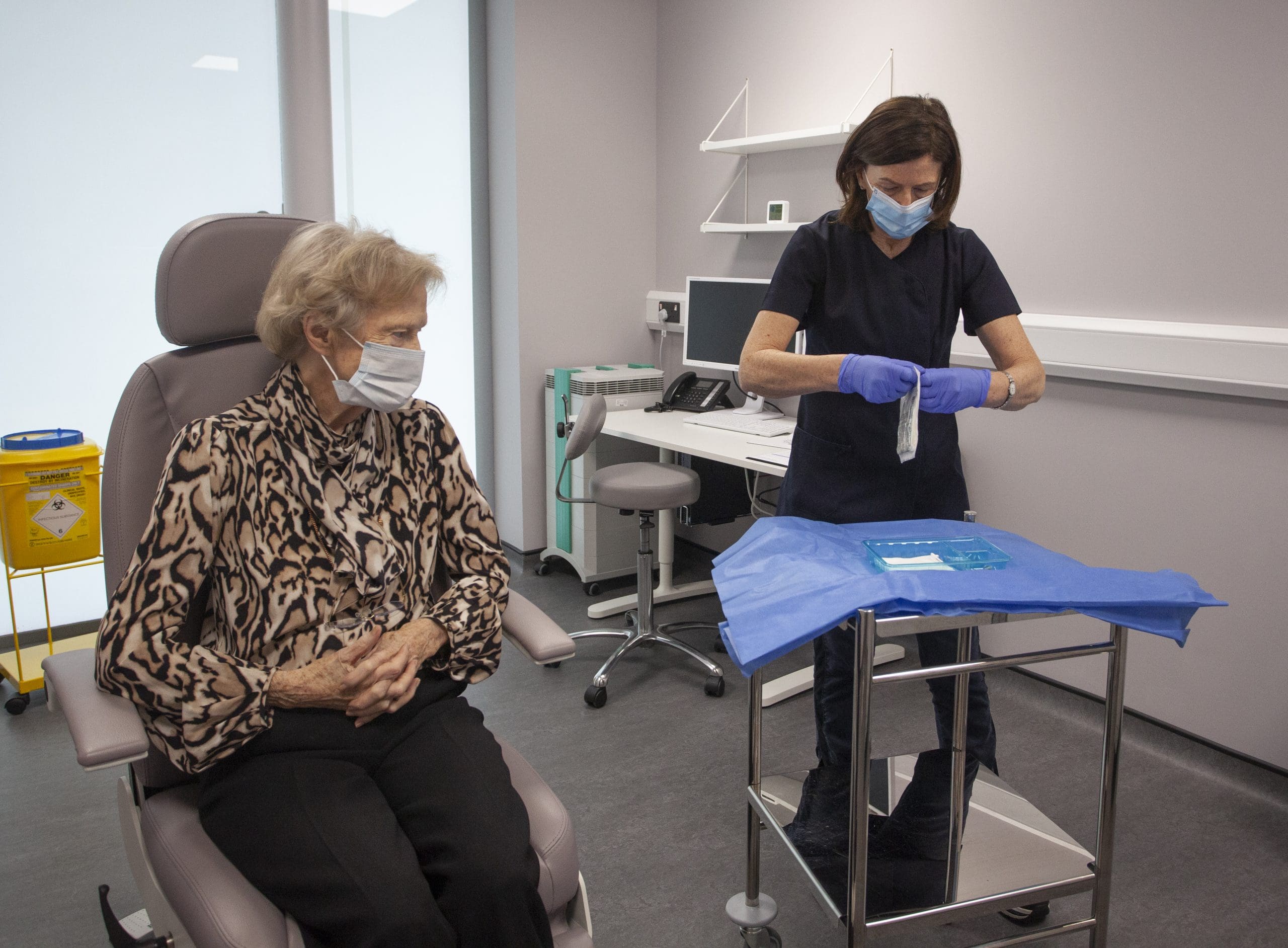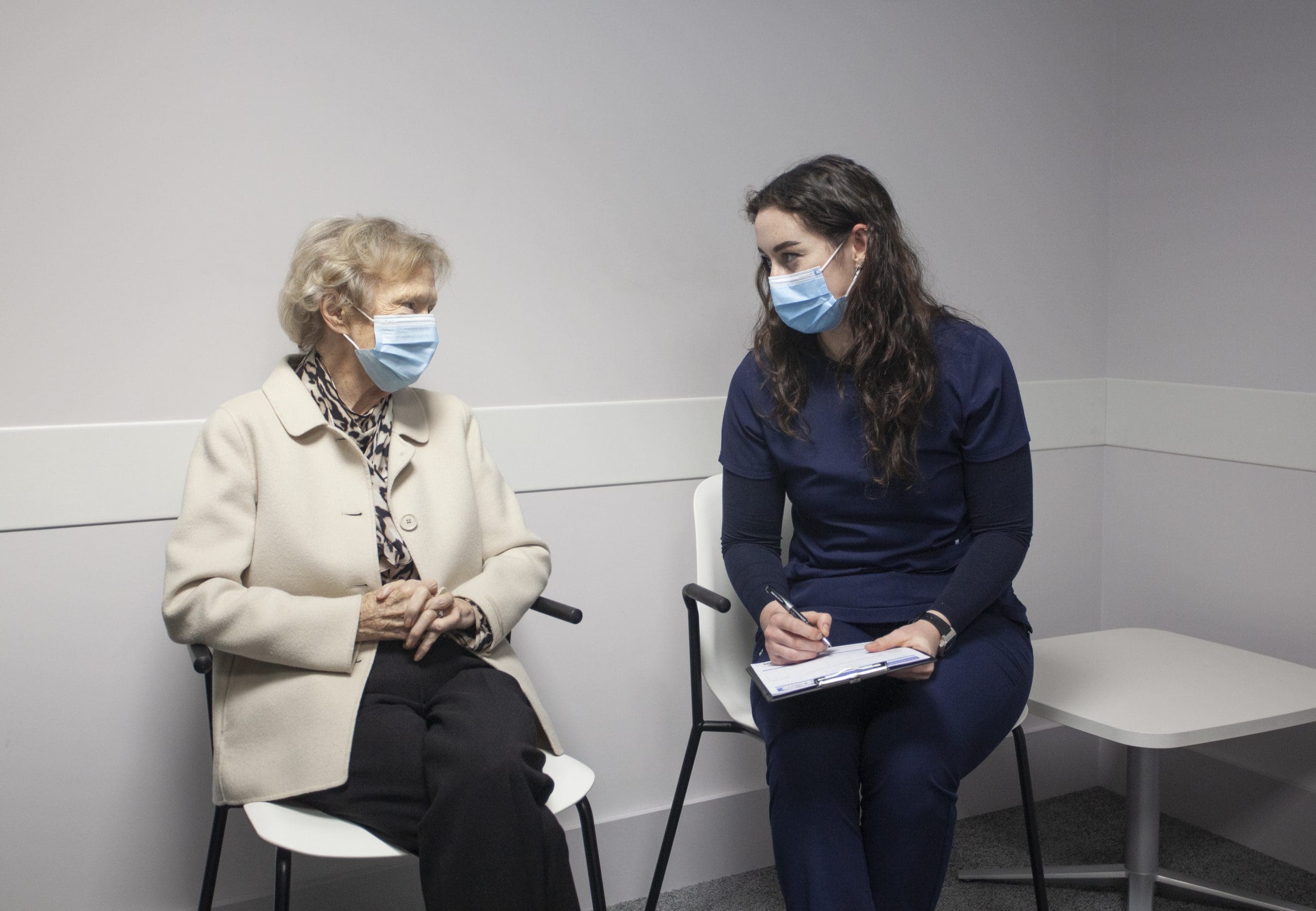A chronic, degenerative condition affecting central vision.
Diabetic Eye Disease
People with diabetes can have an eye disease called diabetic retinopathy. This is when high blood sugar levels change the blood vessels in the retina, causing the blood flow to reduce which lowers the amount of oxygen the retina can get.

Diabetic Eye Disease
The retina makes a chemical called vascular endothelial growth factor (VEGF) to try and help itself. High levels of VEGF cause the normal retinal blood vessels in the centre of the retina (the macula) to swell and leak. This is called diabetic macular oedema (DMO). The VEGF can also cause abnormal new blood vessels to grow on the retina which is called proliferative diabetic retinopathy. Both of these changes can result in reduced vision which may be permanent.
What Happens When You Have Diabetic Retinopathy?
You can have diabetic retinopathy and not know it. This is because it often has no symptoms in its early stages. As diabetic retinopathy gets worse, you will notice symptoms such as:
- seeing an increasing number of floaters,
- having blurry vision,
- having vision that changes sometimes from blurry to clear,
- seeing blank or dark areas in your field of vision,
- having poor night vision, and
- noticing colours appear faded or washed out
- losing vision.
- Diabetic retinopathy symptoms usually affect both eyes.
| Video from www.aao.org |

Good blood sugar control is vital
Controlling your blood sugar and blood pressure can stop vision loss. Carefully follow the diet your diabetes doctor or the diabetes team looking after you has recommended. Take the medicine your diabetes doctor prescribed for you. Sometimes, good sugar control can even bring some of your vision back. Controlling your blood pressure keeps your eye’s blood vessels healthy.
Medicine
The first line of treatment for diabetic macular oedema is to reduce the VEGF levels in the eye with anti-VEGF medicines injected into the eye. The medicine can help reduce the swelling of the macula (the central part of the retina) but the treatment is often required to be repeated over a long period of time.
Anti-VEGF injections can also be used to treat proliferative diabetic retinopathy but they are not usually the first line of treatment.
Laser surgery
Sometimes laser can be used in the macula to help oxygen pass from a deeper blood layer in the eye wall into the central part of the retina which can treat diabetic macular oedema. This is call argon grid laser and is usually done after a course of injections but it only works in about 30% of patients.
If you have proliferative diabetic retinopathy and new, abnormal, blood vessels are growing in your eye, you will need a more extensive laser treatment called argon pan-retinal photocoagulation (PRP). This helps the oxygen pass from the deeper blood layer in the eye wall into the retina over the whole of the retina. This can lower the chance of bleeding in the eye and keeps eye pressure from rising too much.
Vitreo-retinal surgery
Surgery to remove the vitreous or jelly in the eye may be needed to treat diabetic macular oedema that doesn’t respond to other treatments or to treat haemorrhage in the eye or pulling on the retina by the vitreous, both of which can occur because of proliferative diabetic retinopathy.
5 Ways to Prevent Vision Loss from Diabetic Retinopathy
- If you have diabetes, talk with your GP or diabetes doctor about controlling your blood sugar. High blood sugar damages retinal blood vessels. That causes vision loss.
- Do you have high blood pressure or kidney problems? Ask your doctor about ways to manage and treat these problems.
- Register with Diabetic Retina Screen (diabeticretinascreen.ie) the national diabetic retinopathy screening programme to have screening photographs taken to detect the early changes of diabetic eye disease. Alternatively have an annual dilated eye examination with your eye doctor or optometrist.
- If you notice vision changes in one or both eyes, call your eye doctor or optometrist right away.
- Get treatment for diabetic retinopathy as soon as possible. This is the best way to prevent vision loss.

